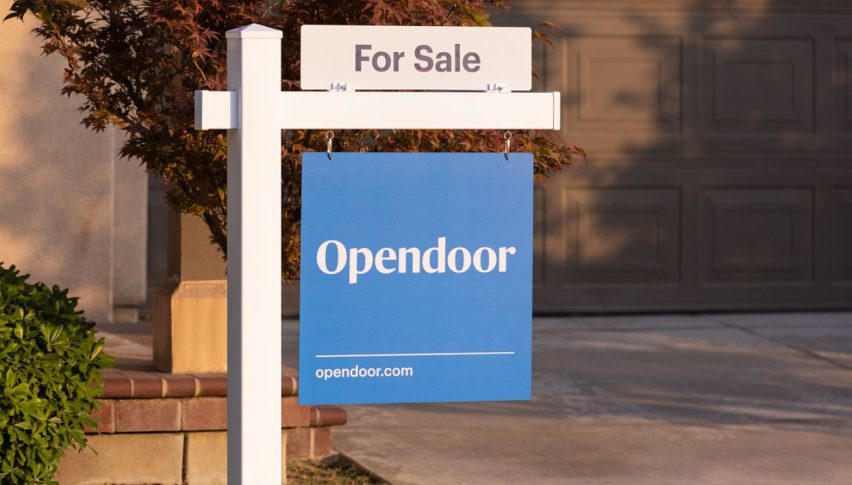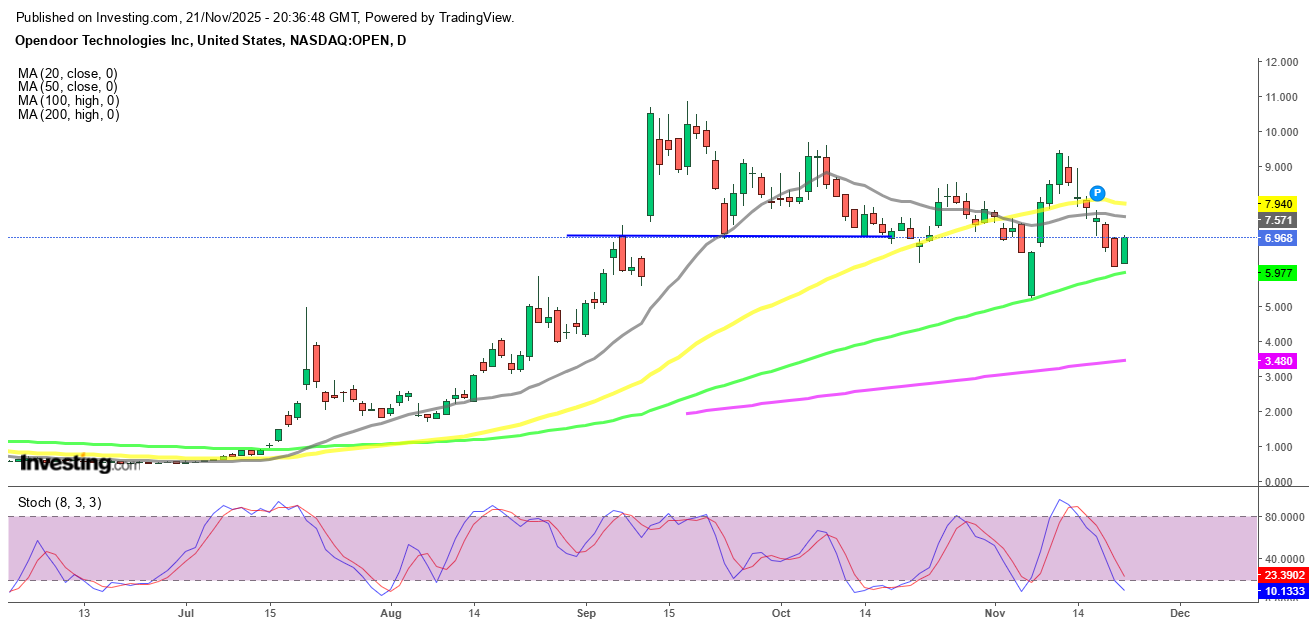OPEN Stock Rebounds Off Support on Friday but Is It Sustainable?
After an explosive rebound earlier in the year, Opendoor Technologies is once again facing reality as mounting losses, rate uncertainty...

Quick overview
- Opendoor is experiencing a decline in stock value due to rising losses and uncertainty in the housing market.
- Despite a brief rebound, the stock remains over 13% down for the week, highlighting fragile momentum.
- The company's business model is under pressure as it holds unsold properties, increasing carrying costs amid stagnant market activity.
- Recent financial results reveal significant losses and declining revenue, raising concerns about the sustainability of Opendoor's operations.
After an explosive rebound earlier in the year, Opendoor is once again facing reality as mounting losses, rate uncertainty and slowing housing activity undermine confidence in the stock.
Opendoor’s Momentum Starts to Fade
Opendoor’s once-impressive revival is now losing steam as a combination of rising losses, dilution risks and changing rate expectations begins to weigh heavily on the stock. While a rebound was seen on Friday, the broader trend remains fragile.
Opendoor Technologies endured a difficult week in the markets. Shares dropped almost 8% on Thursday alone, extending a decline that pushed the stock roughly 25% lower by the close of the US session that day. Friday brought some relief, with a 12% rebound, but even after that bounce the stock still finished the week more than 13% in the red, so is this a temporary recovery than a sustained comeback?
From $11 Highs to Renewed Pressure
Opendoor came close to touching $11 in September, lifted by falling mortgage rates and renewed investor appetite for risk. The optimism, however, proved short-lived. The retreat began in early September and, despite a brief recovery last week, the stock quickly ran out of momentum again.
That short-lived bounce saw OPEN climb from the 100 daily SMA (green) near $5.20 to around $9.45. The move was fuelled in part by a $1 million insider purchase and a wave of speculation following warrant-related announcements driven by the company’s CEO. Still, the rally lacked staying power and quickly faded.
As the broader macro picture shifted, so did sentiment around Opendoor.
Fed Signals Add to the Strain
Fresh signals from the Federal Reserve suggesting that further rate cuts could be placed on hold in December could not have come at a worse time for a company deeply tied to housing-market dynamics. For Opendoor, which benefits from lower borrowing costs and rising transaction volumes, a pause in easing threatens to further cloud its outlook.
On Friday, the stock managed to hold slightly above the 100 daily SMA (green) once again, triggering a modest rebound. However, for any sustainable upside to take shape, buyers will likely need to drive the stock back above the 50 daily SMA (yellow), which has now become a key technical barrier to a renewed uptrend.
OPEN Chart Daily – Returning Below the 50 SMA Again
Part of Friday’s recovery also reflected the wider bounce in US stock markets after Thursday’s sharp sell-off, offering temporary support to names like Opendoor that had been oversold.
Activist Pressure and a Frozen Housing Market
Another factor behind the Friday rebound was renewed attention from activist investor Eric Jackson of EMJ Capital. After increasing pressure on the board, Jackson softened his earlier threat of pursuing legal action over delays in appointing co-founder Keith Rabois. He cited strong shareholder support as a reason to hold off, easing immediate tensions and helping lift sentiment.
Yet soft headlines cannot change the stark reality of today’s housing market. Activity remains stagnant, with Redfin pointing to an unusually frozen environment over the past year. Elevated prices, lingering economic concerns and high financing costs continue to keep buyers on the sidelines, while sellers remain reluctant to list.
For many real estate companies, this is a difficult backdrop. For Opendoor, it is potentially devastating.
Inventory Turns From Asset to Burden
Opendoor’s business model depends on buying homes directly, holding them briefly, and reselling them for a profit. That model functions best in a fast-moving market. When transactions slow, the risks multiply.
The company now holds billions of dollars worth of unsold properties. Every extra day on the books increases carrying costs, including property taxes, maintenance and financing expenses that never stop accumulating. With gross margins of only around 7%, there is virtually no room for error if sales slow down.
Instead of a growth engine, inventory becomes a financial anchor.
Weak Numbers Expose Structural Risks
The company’s Q3 financial results underscored the growing pressure.
- Net loss expanded by 15% to $90 million from $78 million
- Gross profit dropped 37%
- Revenue declined 33% to $915 million, even though that figure exceeded already-lowered guidance
These figures highlight the vulnerability of Opendoor’s model in an environment where rising rates and reduced affordability continue to suppress demand. If the Fed indeed pauses or delays further rate cuts in December, affordability could worsen again — placing additional strain on both volumes and pricing.
For now, the stock has found short-term technical support. But without a meaningful improvement in market conditions and financial performance, that support may prove temporary.
- Check out our free forex signals
- Follow the top economic events on FX Leaders economic calendar
- Trade better, discover more Forex Trading Strategies
- Open a FREE Trading Account

